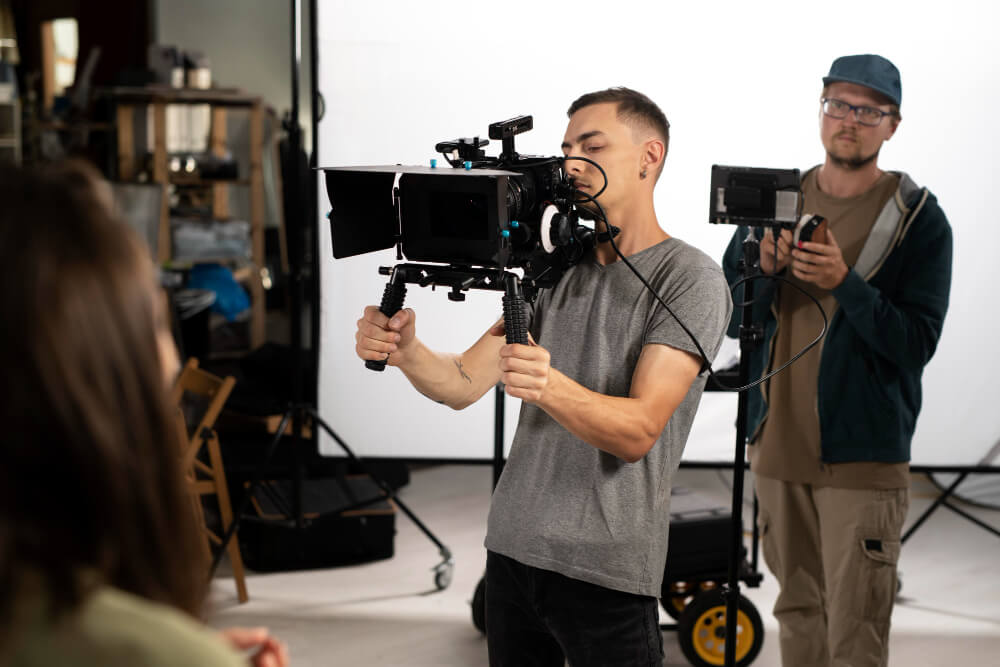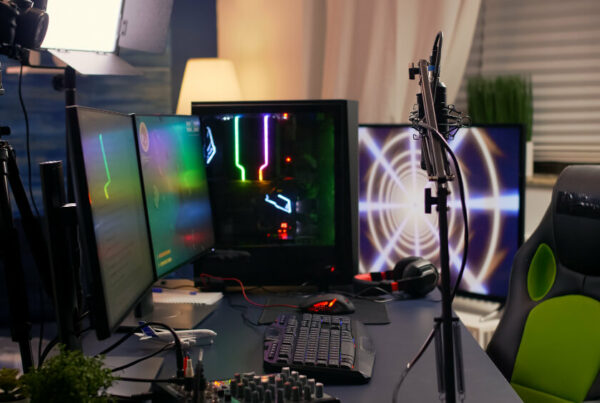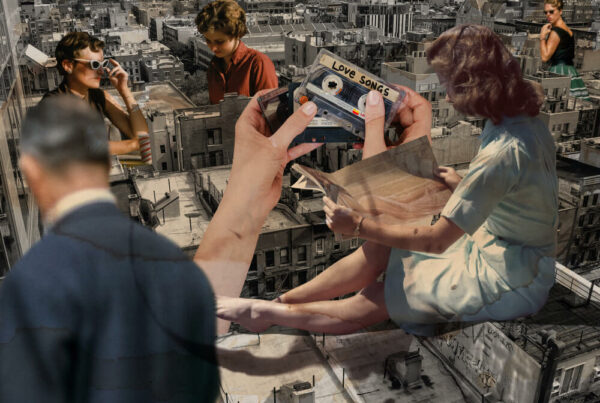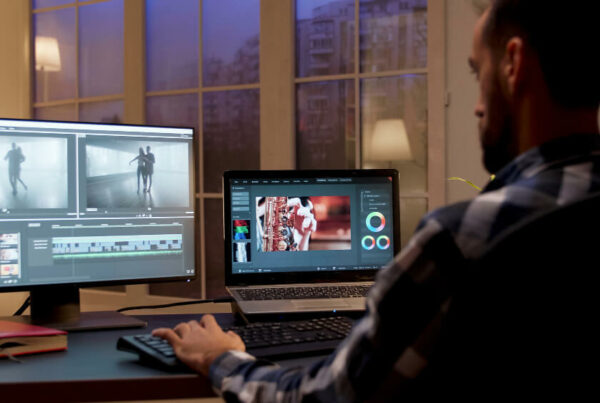Introduction
Visual storytelling is at the heart of filmmaking. It is the powerful language that filmmakers use to convey emotions, themes, and messages without words. From commercials to feature-length films, visual storytelling is the tool that connects the audience to the narrative in profound and unforgettable ways. Whether you’re a beginner with a passion for storytelling or an experienced filmmaker looking to refine your craft, mastering the fundamentals of visual storytelling is essential.
In this blog, we’ll explore the foundational techniques that form the bedrock of visual storytelling in filmmaking. From composition and lighting to framing and camera movement, each element plays a critical role in guiding the viewer’s emotions and attention.
1. Composition: The Language of Balance and Harmony
Composition is one of the most critical elements in visual storytelling. It is the way you arrange elements within a frame, and it can dramatically affect how a story is perceived by the audience. Think of composition as the structure of your visual narrative. A well-composed shot not only pleases the eye but also conveys meaning.
Rule of Thirds
One of the most well-known techniques in composition is the “Rule of Thirds.” The idea is to divide your frame into a grid with two vertical and two horizontal lines, creating nine equal parts. Placing important elements of your scene at the intersections or along these lines creates a more engaging and balanced composition. For example, a character’s eyes can be placed at the upper horizontal line, instantly drawing the viewer’s attention.
Leading Lines
Leading lines guide the viewer’s eye to a specific point in the frame. These can be roads, rivers, walls, or even the way light falls. When used effectively, leading lines create a sense of depth and draw the audience into the scene, helping them focus on what’s most important.
Symmetry and Asymmetry
Symmetry can create a sense of stability, harmony, and calm in a scene, while asymmetry can evoke tension or imbalance. Knowing when to use one or the other can greatly affect the emotional tone of your film. For instance, placing a character dead center in a perfectly symmetrical frame can create a feeling of dominance or control, while positioning them off-center can suggest vulnerability or imbalance.
2. Lighting: Painting with Light and Shadow
Lighting is another fundamental tool in visual storytelling. It can set the mood, indicate the time of day, and even reveal a character’s emotional state. The way you manipulate light and shadow will dictate the mood of your scene.
Three-Point Lighting
A classic technique in filmmaking is three-point lighting, which involves a key light, fill light, and backlight. The key light is the primary source, illuminating the subject. The fill light softens the shadows, and the backlight helps separate the subject from the background. This setup creates depth and dimension, ensuring the subject is well-lit while maintaining a cinematic feel.
Natural Lighting
Some of the most captivating scenes in filmmaking use natural light. While it can be unpredictable, working with natural light—especially during the “golden hour” (just after sunrise or before sunset)—can create magical, soft lighting that adds a natural beauty to your film.
Low-Key Lighting
Low-key lighting is often used in dramas, thrillers, and horror films to create a sense of mystery, suspense, or danger. By using minimal light sources and embracing shadows, filmmakers can craft a more intense and emotionally charged atmosphere. It’s an excellent technique for conveying fear, tension, or unease in storytelling.
3. Framing: Directing the Viewer’s Attention
Framing is how you present your subject within the shot. It’s not just about what’s in the frame, but also what’s left out. Strategic framing ensures that the audience focuses on the right elements in your story.
Close-Ups vs. Wide Shots
Close-ups are a powerful way to convey emotion. By focusing on a character’s face, a filmmaker can capture subtle expressions that tell the viewer exactly how the character is feeling. Conversely, wide shots show the character in their environment, often giving context to the scene or establishing the location.For instance, a close-up of an actor’s trembling hand can convey anxiety or fear, while a wide shot of the same actor sitting alone in a vast, empty field could evoke loneliness or isolation. Both framing choices tell different aspects of the story, despite focusing on the same character.
Over-the-Shoulder Shots
These are commonly used in dialogue scenes to show the point of view of one character while still keeping both characters in the shot. Over-the-shoulder shots create a sense of intimacy and involvement, as if the audience is part of the conversation.
4. Camera Movement: Adding Life to Your Story
While still shots can be powerful, camera movement brings a dynamic energy to your scenes. The way a camera moves can influence how the audience feels, making them more invested in the story.
Static vs. Dynamic Shots
Static shots, where the camera doesn’t move, are excellent for creating a sense of calm or tension. They can force the viewer to focus entirely on the action happening within the frame. On the other hand, dynamic shots, where the camera moves, can convey excitement, chaos, or even the passage of time.
Tracking Shots
Tracking shots are used to follow a subject as they move through a scene. These are often employed in action sequences to make the audience feel as though they are part of the chase. A well-executed tracking shot can bring a sense of fluidity and urgency to your storytelling.
Dolly Zoom (Vertigo Effect)
The dolly zoom is a dramatic camera movement where the camera moves closer to or farther from the subject while simultaneously zooming in the opposite direction. This creates a warped sense of space and can be used to convey moments of realization, disorientation, or even fear. The technique was famously used by Alfred Hitchcock in Vertigo, hence its nickname.
5. Symbolism in Visual Storytelling
Symbolism plays a vital role in storytelling, allowing filmmakers to communicate deeper meanings without explicitly stating them. A red balloon drifting into the sky might symbolize lost innocence, while a broken mirror could represent fractured identity. By incorporating symbolic imagery, you add layers of complexity to your narrative.
Conclusion: Telling Stories Beyond Words
Mastering the techniques of visual storytelling is about more than just knowing how to operate a camera. It’s about understanding how each element of a scene—from composition and lighting to framing and movement—works together to convey emotions, themes, and meaning to your audience. As you develop your skills, you’ll find that visual storytelling is one of the most powerful ways to connect with viewers, leaving a lasting impact that words alone could never achieve.
Whether you’re just starting out in filmmaking or are looking to refine your craft, these foundational techniques will help you create more engaging and emotionally resonant stories. Stay tuned as we delve deeper into each of these aspects in the upcoming blogs!
Click here





